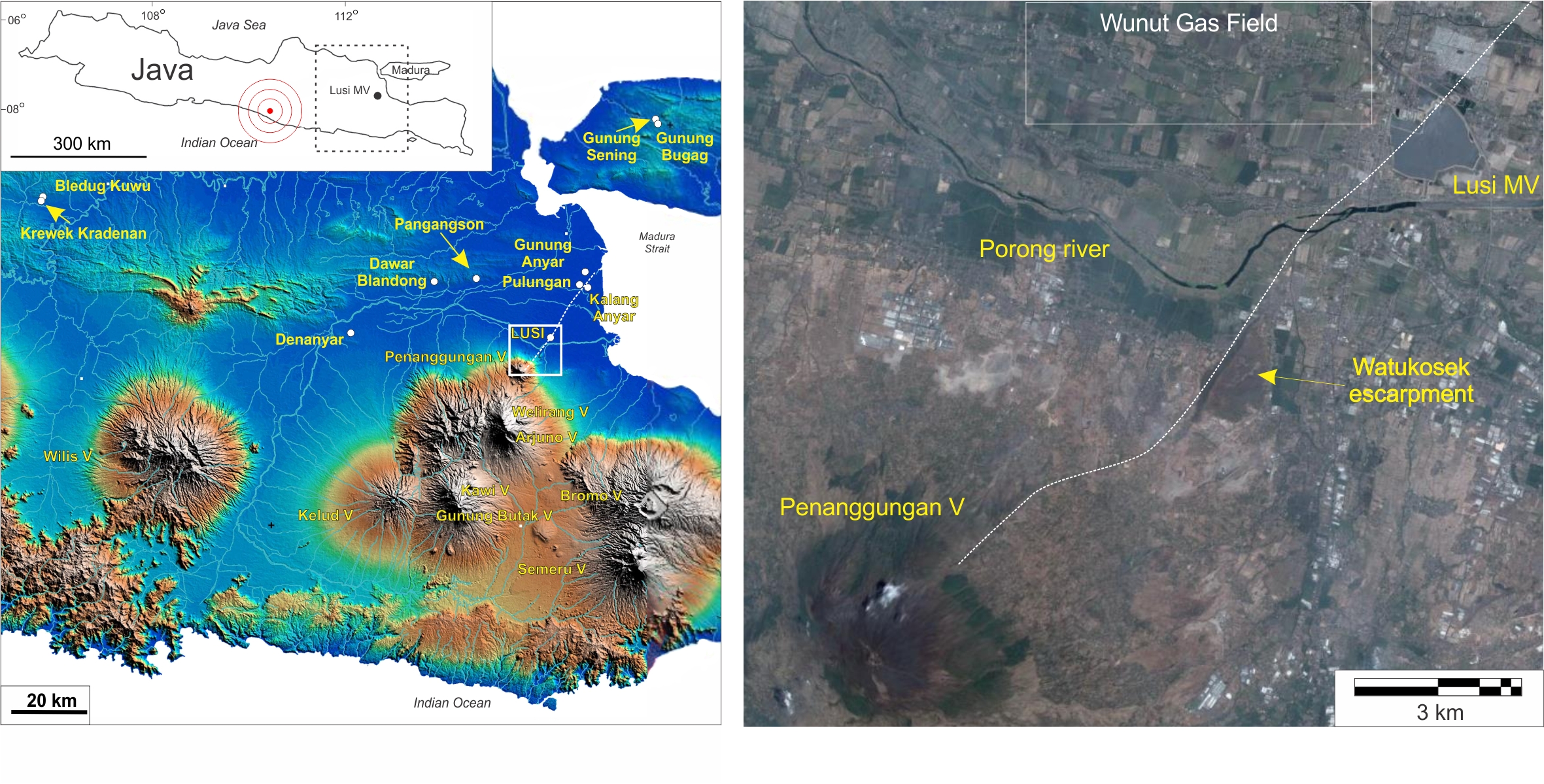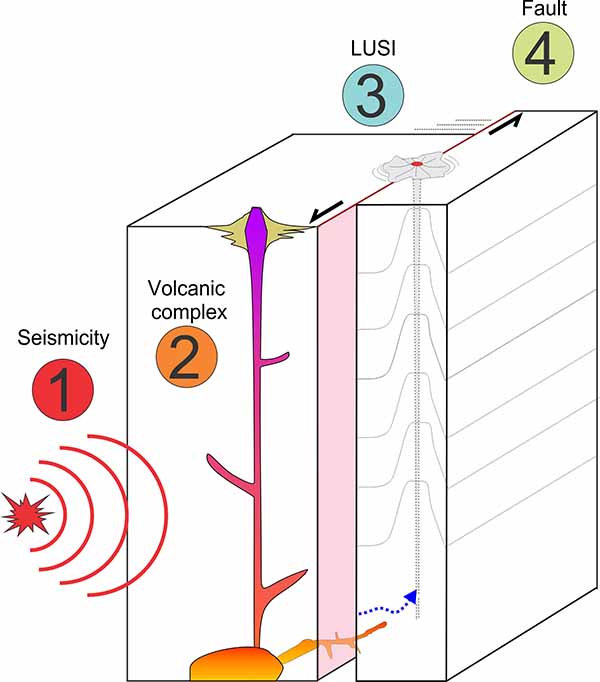7 Java


The spectacular Lusi eruption started in northeast Java the 29 of May 2006 following to a 6.3 M earthquake striking the island. Initially, several gas and mud eruption sites suddenly appeared along a reactivated fault system and within weeks several villages were submerged by boiling mud. The most prominent eruption site was named Lusi. To date Lusi is still active and erupting gas, water, mud and clasts.
LUSI LAB is an ambitious project that aims to perform a multidisciplinary study using Lusi as a unique natural laboratory and represents an unprecedented opportunity to study and learn from an ongoing active eruptive system.
LUSI LAB focuses on five main aspects in order to complete a comprehensive regional investigation: 1) monitoring on local micro-seismicity related to regional seismicity; 2) monitoring and sampling of the neighbouring volcanic arc; 3) sampling and monitoring of the active Lusi eruption site; 4) monitoring of the fault system originating from the volcanic arc, crossing Lusi and extending to the NE of java island; 5) numerical modelling of Lusi activity.
In order to achieve the aims, we use the deployment of multisensory sampling devices within the active feeder channel coupled with a remote-controlled raft and flying device to access and sample the crater and the erupted gases. These data together with a new network of GPS and seismometers, will allow the evaluation of the impact that seismicity, local faulting and the neighbouring Arjuno-Welirang volcanic complex have on the long-lasting Lusi activity. The acquired information will provide robust constraints to model the pulsating Lusi behaviour and will be used as initial step to estimate the longevity of the eruption.
